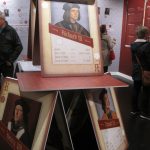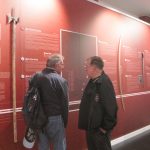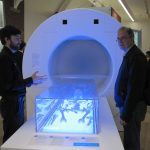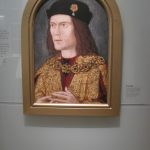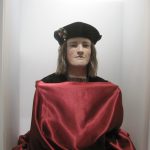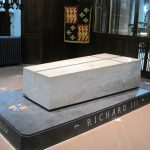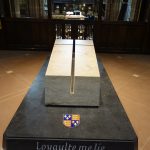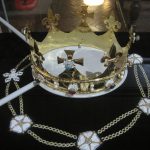We awoke to rain lashing the windows and reports of potholes on the motorway, but we were not worried. For this trip we had decided to let the train take the strain. It takes around an hour and a half to travel from London St Pancras to Leicester.
A short walk from the station took us to the King Richard III visitor centre, opposite Leicester Cathedral. There is a statue of King Richard III installed in Cathedral Gardens. This bronze figure was donated to the city by the Richard III Society in 1980.
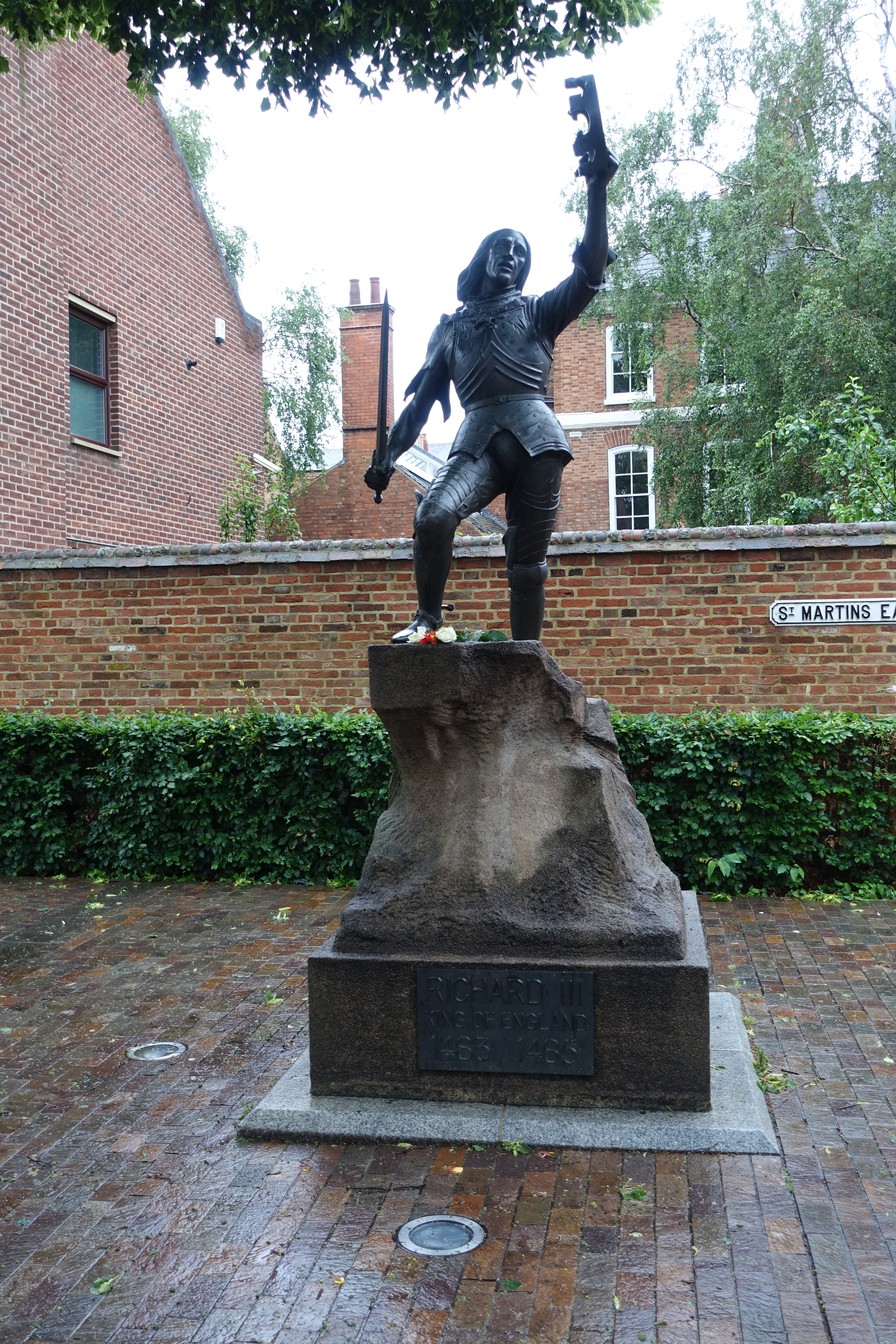
The King Richard III visitor centre is housed in a Victorian Gothic revival building that used to be a school. Built partly on the site of the former Grey Friars Church, it is right next to the spot where the king’s remains were found.
The first room of the exhibition contains an introductory film giving brief facts about the king and the major players in his story. The next room is “Murder, Mystery and Mayhem”, which gives a timeline to the Plantagenet reign. It includes the vast family tree of the Houses of York and Lancaster and gives an insight to the Wars of The Roses. I was especially taken with the house of cards in the centre of the room, symbolising the precariously balanced factions at play during this period of history.
I knew Richard III was the last of the Plantagenet kings and the last king to die in battle, but had only a vague idea about the Wars of The Roses. The exhibition was very informative, with details of birth rights and family connections and a battle wall which described the key battles in the Wars of The Roses.
Continuing through the exhibition we learnt about the life of Richard III and how he came to be king. We learnt about his nephews, the Princes in the Tower, and speculation on what happened to them. We discovered Richard’s improvements to the judicial system, safeguarding the rights of the common man. We also learnt about the Battle of Bosworth in 1485, with a film and hand-on exhibition.
Then we headed upstairs to the myths of Richard III. History is written by the victors and, in Richard’s case, his history had to strengthen the Tudor dynasty.
The exhibition leads on to a reappraisal of Richard III, the attempts to find him and the discovery of bones in the Leicester city centre car park.
Philippa Langley, of the Richard III Society, was instrumental in getting the excavation of the site in 2012 which uncovered the old Greyfriars church, and a skeleton with battle wounds and a curved spine. Using the first-ever genome sequencing of ancient DNA they were able to prove this was the final resting place of the king. Well final until he was reburied in Leicester cathedral.
The exhibition includes a reconstruction of the bones found and a facial reconstruction based on the bones. This can be compared to a portrait of the King.
We were lead downstairs to see the exact place where Richard’s remains were buried for over 500 years. The area is covered with a glass floor and a hologram indicates where the body lay.
This is where the tour ends, giving access to the gift shop and the small garden. As it was still raining heavily we elected to head for The White Boar Café instead. After lunch and a look around the gift shop, we headed across the road to Leicester Cathedral.
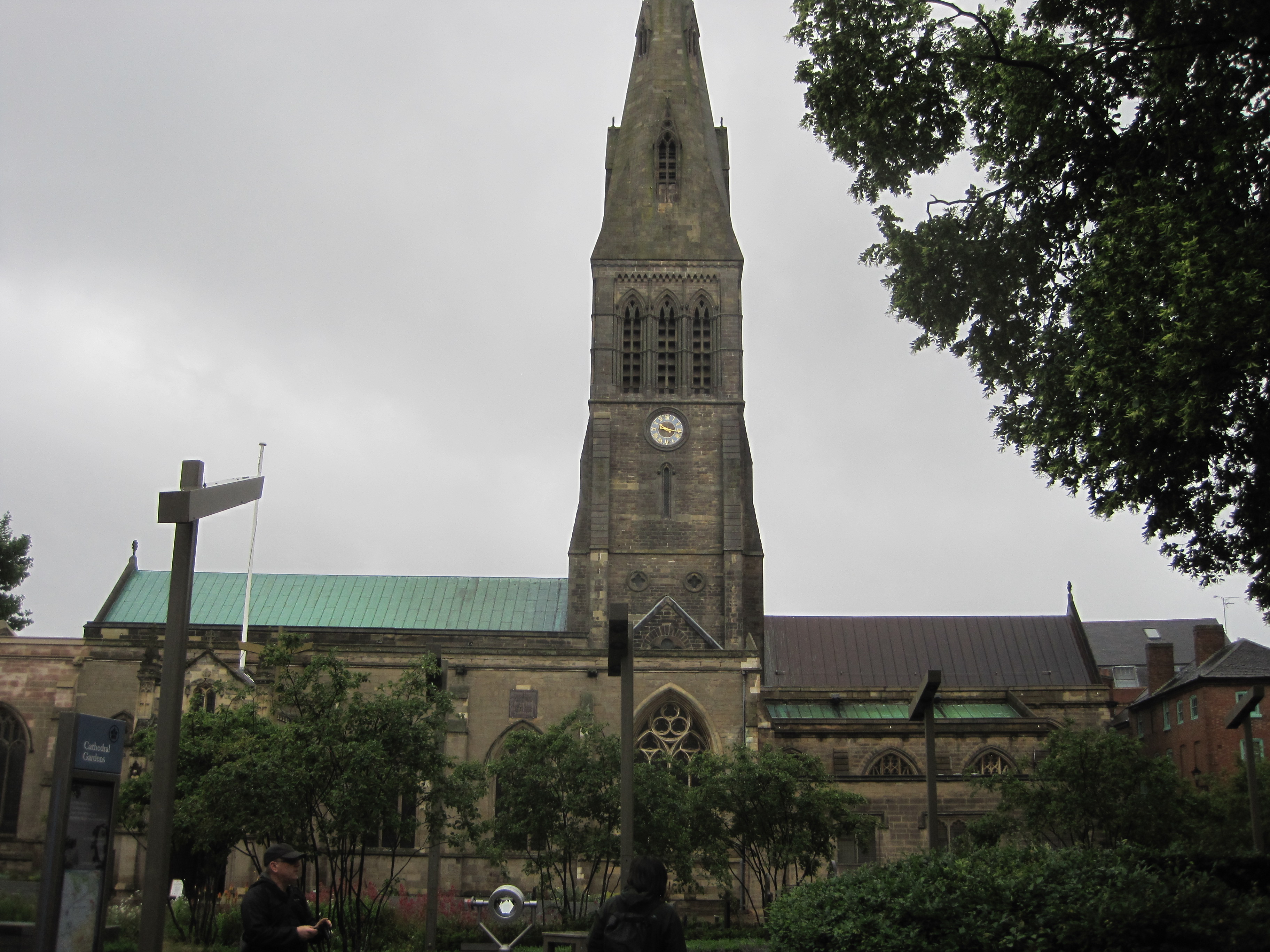
Construction of the original St Martin’s church began with the Normans around 900 years ago. The church was rebuilt and enlarged between the 13th and 15th centuries and became a cathedral in 1927.
The tomb of King Richard III is made of a single piece of Swaledale fossil stone with a deep cross cut across it. It stands on a Black Kilkenny marble plinth with lettering showing Richard’s name, dates and motto, as well as his personal insignia – a boar.
At the far end of the cathedral is a display case containing the Pall that cover the King’s coffin before his reinternment and a specially commissioned crown.
The crown is a replica of the sort King Richard III would have worn. Made by George Easton, it contains semi precious stones and pearls on gilded metal. The pall was made by Jacqui Binns. It has figures embroidered onto black velvet. One side shows medieval characters, the other people connected with the discovery and reinternment.
On leaving the cathedral, we made a quick dash through the rain to the Guildhall. This includes a museum and coffee shop. The small gift shop offered a Richard III walking tour booklet, but as the storm was getting worse we decided not to bother. Maybe next time.
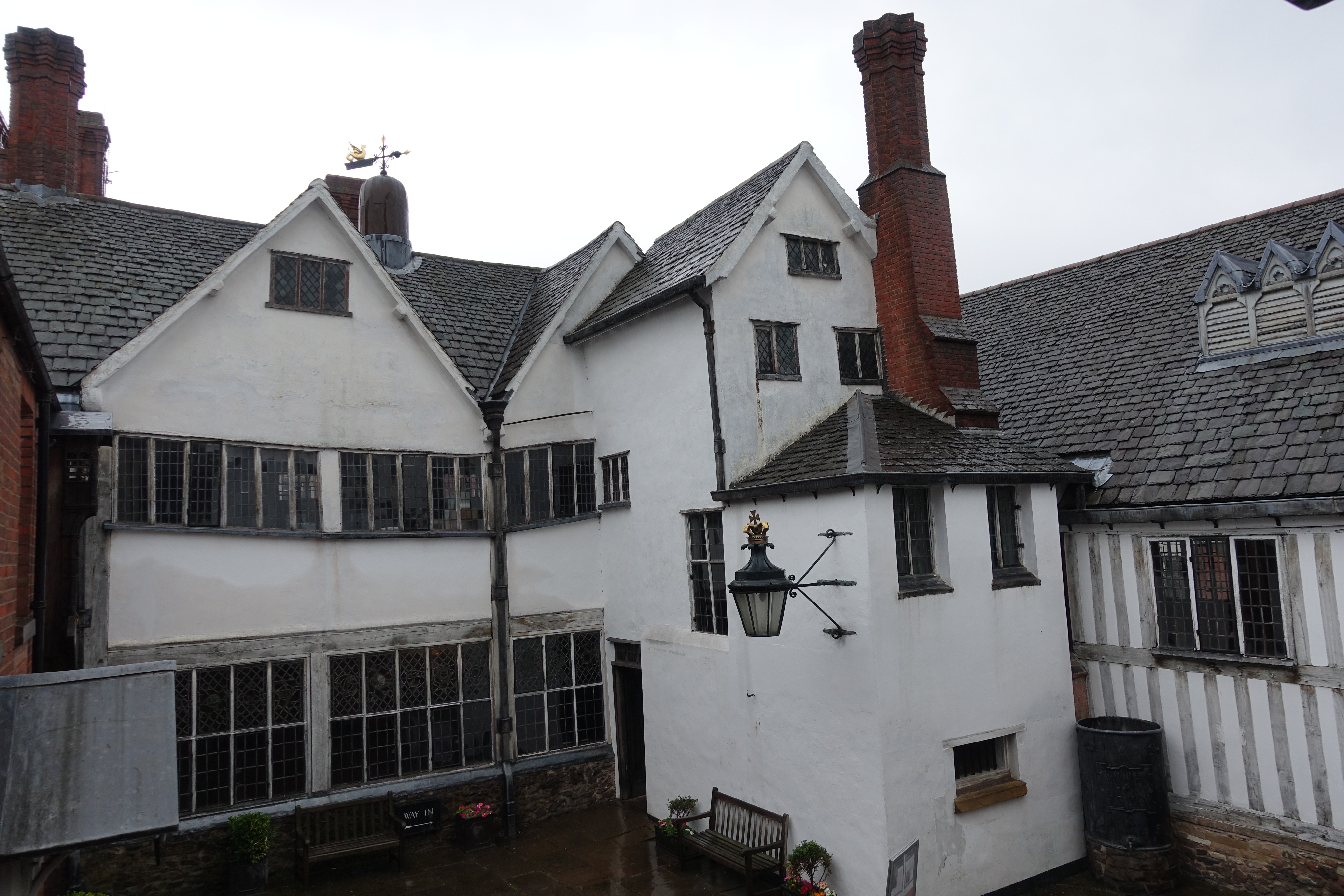
We had a fantastic day trip to Leicester, learnt a lot about the Plantagenet kings, especially Richard III. We look forward to visiting again, hopefully next time in the sunshine.
Want to be a City Adventurer yourself?
Join our club for people who want to find new adventures and live life to the full. Just click the link and join the club
